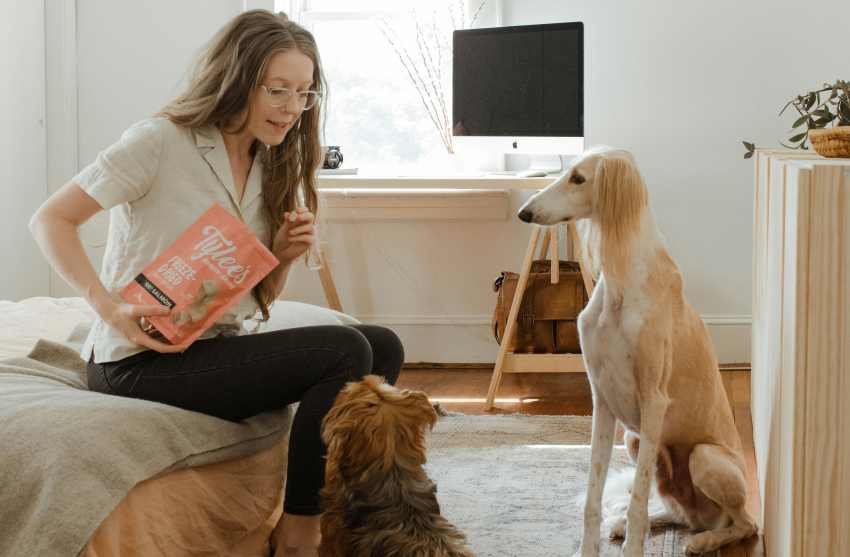Various methods and philosophies abound in dog training, each claiming to be the most effective in molding a well-behaved and happy canine companion. Among these, positive reinforcement dog training has emerged as a beacon of compassion and understanding in fostering strong bonds between humans and their four-legged friends.
In this article, we will explore the principles, benefits, and practical applications of positive reinforcement dog training, shedding light on why it has become the preferred method for many dog owners and trainers alike.
Understanding Positive Reinforcement Dog Training
Positive reinforcement dog training is a technique that rewards desired behaviors rather than punishing undesirable ones. The core principle revolves around reinforcing good behavior with positive stimuli, such as treats, praise, toys, or affection. By associating these rewards with specific actions, dogs learn to repeat behaviors that result in positive outcomes, leading to a harmonious relationship between pets and their owners.
The key element of positive reinforcement lies in timing. Rewarding the dog immediately after they exhibit the desired behavior is crucial, reinforcing the connection between the action and the positive consequence. This method relies on the psychological concept of operant conditioning, where dogs learn to associate their actions with consequences.
Benefits of Positive Reinforcement Dog Training
Builds Trust and Strengthen Bonds:
Positive reinforcement creates a nurturing environment, fostering trust between the dog and the owner. When dogs associate training with positive experiences, they become more willing to engage and cooperate. This trust forms the foundation of a solid and lasting bond.
Promotes a Positive Learning Experience:
Unlike punitive methods, positive reinforcement focuses on what the dog does right rather than what they do wrong. This positive approach makes the learning process enjoyable for the dog, encouraging them to participate actively in training sessions.
Enhances Communication:
Positive reinforcement relies on clear and consistent communication between the owner and the dog. As the dog learns to associate specific cues with rewards, communication becomes more effective, facilitating better understanding and cooperation.
Reduces Fear and Anxiety:
Punitive training methods can lead to fear and anxiety in dogs, potentially causing behavioral issues. Positive reinforcement minimizes stress by creating a positive association with training, leading to a more confident and well-adjusted pet.
Encourages Problem Solving:
Dogs trained using positive reinforcement often become more adept at problem-solving. They learn to think critically and make choices based on the anticipation of positive outcomes, contributing to a mentally stimulated and engaged canine companion.
Practical Applications of Positive Reinforcement Dog Training
Basic Commands:
Positive reinforcement effectively teaches basic commands such as sit, stay, and come. By rewarding the dog for following these commands, they quickly learn the desired behaviors, making daily interactions smoother and more enjoyable.
Leash Training:
Walking on a leash is a common challenge for many dog owners. Positive reinforcement can be applied by rewarding the dog for walking calmly on the leash, reinforcing your desired behavior, and discouraging pulling or erratic behavior.
Socialization:
Positive reinforcement is invaluable in socializing dogs with other pets and people. By rewarding friendly and calm behavior in various social situations, dogs learn to associate positive experiences with social interactions, reducing anxiety and fear.
Crate Training:
Crate training is often necessary for the dogs’ and owners’ safety and well-being. Positive reinforcement can be employed to create positive associations with the crate, turning it into a safe and comfortable space for the dog.
Addressing Behavioral Issues:
Positive reinforcement is a powerful tool for addressing and correcting behavioral issues. Instead of punishing unwanted behavior, focus on rewarding alternative, desirable behaviors. This method helps reshape the dog’s behavior without causing stress or fear.
Challenges and Considerations of Positive Reinforcement Training
While positive reinforcement is a widely praised training method, it’s essential to acknowledge potential challenges and considerations.
Consistency is Key:
Consistency is crucial in positive reinforcement training. Inconsistency can confuse the dog and hinder the learning process. Owners and trainers must consistently apply positive reinforcement across various situations.
Patience and Persistence:
Positive reinforcement requires patience and persistence. Dogs, like humans, may not grasp a concept immediately. It’s essential to be patient, celebrate small victories, and persist in reinforcing desired behaviors.
Understanding Individual Dogs:
Dogs are unique individuals with different personalities and learning styles. What works for one dog may not work for another. Tailor your positive reinforcement approach to suit your canine companion’s specific needs and preferences.
In summary, positive reinforcement dog training is a compassionate and effective approach to transforming how we educate and interact with our canine friends. By emphasizing positive experiences and rewarding desired behaviors, this method shapes obedient and well-mannered dogs and strengthens the bond between dogs and their owners.
As we continue to evolve in our understanding of animal behavior, positive reinforcement is a testament to the power of kindness and empathy in fostering a harmonious relationship between humans and their loyal companions.
The Online Dog Trainer is one of the best, in my opinion, positive reinforcement dog training courses available. But don’t take my word for it, check out his free online training.
Related article:
The Ultimate Training Course for Dogs (& Their Owners)
Recent Posts
Summer Safety Guide for Dog Owners: Keeping Your Canine Companion Cool and Comfortable
Summer brings warmth and sunshine, inviting humans and their canine companions to enjoy the outdoors. However, the rise in temperature also increases the risks of overheating and heat-related...
The Importance of Heat Safety for Dogs: Understanding Heatstroke and How to Prevent It
Heatstroke is a serious condition that can occur in dogs when their body temperature becomes dangerously high, typically as a result of prolonged exposure to high temperatures or excessive physical...



